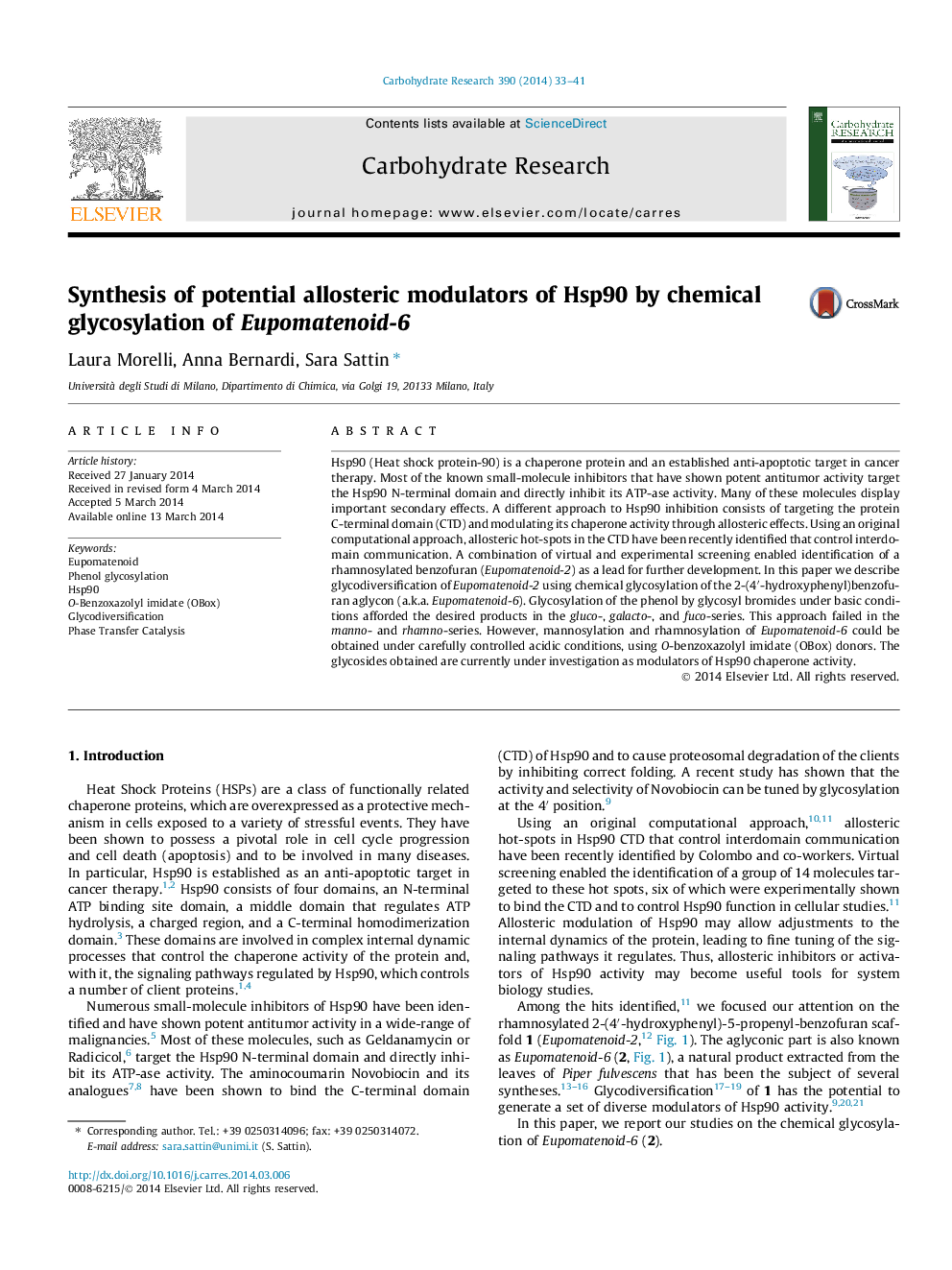| کد مقاله | کد نشریه | سال انتشار | مقاله انگلیسی | نسخه تمام متن |
|---|---|---|---|---|
| 1383678 | 1500861 | 2014 | 9 صفحه PDF | دانلود رایگان |

• Chemical glycodiversification of a complex phenol aglycon was achieved.
• gluco-, galacto-, and fuco-sides were prepared using bromide donors and PTC.
• α-manno and -rhamno derivatives were prepared using O-benzoxazolyl imidate donors.
• A library of 14 glycosylated benzofuran derivatives was obtained.
Hsp90 (Heat shock protein-90) is a chaperone protein and an established anti-apoptotic target in cancer therapy. Most of the known small-molecule inhibitors that have shown potent antitumor activity target the Hsp90 N-terminal domain and directly inhibit its ATP-ase activity. Many of these molecules display important secondary effects. A different approach to Hsp90 inhibition consists of targeting the protein C-terminal domain (CTD) and modulating its chaperone activity through allosteric effects. Using an original computational approach, allosteric hot-spots in the CTD have been recently identified that control interdomain communication. A combination of virtual and experimental screening enabled identification of a rhamnosylated benzofuran (Eupomatenoid-2) as a lead for further development. In this paper we describe glycodiversification of Eupomatenoid-2 using chemical glycosylation of the 2-(4′-hydroxyphenyl)benzofuran aglycon (a.k.a. Eupomatenoid-6). Glycosylation of the phenol by glycosyl bromides under basic conditions afforded the desired products in the gluco-, galacto-, and fuco-series. This approach failed in the manno- and rhamno-series. However, mannosylation and rhamnosylation of Eupomatenoid-6 could be obtained under carefully controlled acidic conditions, using O-benzoxazolyl imidate (OBox) donors. The glycosides obtained are currently under investigation as modulators of Hsp90 chaperone activity.
Figure optionsDownload as PowerPoint slide
Journal: Carbohydrate Research - Volume 390, 22 May 2014, Pages 33–41